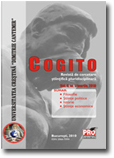STRATEGIES OF EXPLICIT AND IMPLICIT REALIZATION OF MODALITY IN INTERSEMIOTIC TRANSLATION
STRATEGIES OF EXPLICIT AND IMPLICIT REALIZATION OF MODALITY IN INTERSEMIOTIC TRANSLATION
Author(s): Nataliia HolubenkoSubject(s): Semiotics / Semiology, Translation Studies
Published by: Editura Pro Universitaria
Keywords: category of modality; translation; intersemiotic translation; translation strategy;
Summary/Abstract: The article considers the multifaceted and complex phenomenon of modality in terms of the cognitive-discursive and semiotic paradigm of its expression in the process of translation. The aim of the research is to study and analyze the basic principles of the cognitive-discursive and semiotic approaches to the actualization of the category of modality in the context of intersemiotic translation. In the modern scientific paradigm, the category of modality is considered as a functional-semantic, semantic-pragmatic, semantic-syntactic, grammatical or logical category. In the broadest sense, modality can be defined as the attitude of the speaker to the content of the statement, and the attitude of the content of the statement to reality. Within the cognitive-discursive approach, the essence and functions of modality are related to verbalized thinking of the individual. Accordingly, this approach is closely related to culturological, individual, and ethnocultural features of the conceptual systems of the author, speaker, and translator. Intersemiotic translation means the recording of the original text by means of another sign (semiotic) system. Thus, the notion of multimodality is described in the research paper where the text is considered as a complex structure that combines a set of linguistic and paralinguistic features inherent in different semiotic systems.
Journal: Cogito - Multidisciplinary research Journal
- Issue Year: 2022
- Issue No: 2
- Page Range: 145-159
- Page Count: 15
- Language: English

